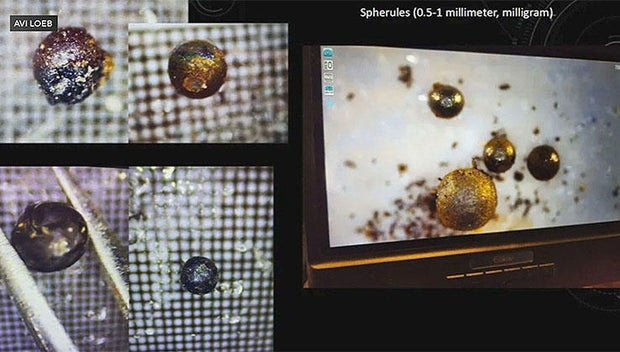Bizarre
This Harvard Professor Believes He’s Found Pieces Of ‘Alien Technology’ In The Waters Off Of Papua New Guinea

Avi Loeb, a professor at Harvard, is certain that he has identified possible relics of extraterrestrial technology in the debris of a meteor that crashed into the seas off the coast of Papua New Guinea in 2014.
The materials have recently been transported back to Harvard by Loeb and his colleagues for further examination. The United States Space Command is able to establish with an almost unshakeable confidence level of 99.999% that it originated from another solar system. The government provided Loeb with a radial distance of 10 kilometers (6.2 miles) around the possible landing site.
“That is where the fireball took place, and the government detected it from the Department of Defense. It’s a very big area the size of Boston, so we wanted to pin it down,” said Loeb, “We figured the distance of the fireball based off the time delay between the arrival of blast wave, the boom of explosion, and the light that arrived quickly.”
Because of their calculations, they were able to plot out a possible course for the meteor. The results of their computations carved a course that occurred to pass exactly across the ten kilometer range that was predicted by the United States government.
Loeb and his team traveled to the location in a vessel known as the Silver Star. The ship made a number of laps both along and around the course that had been forecast for it. The researchers explored the ocean bottom using a sled that was loaded with magnets and was attached to their boat.
“We found ten spherules. These are almost perfect spheres, or metallic marbles. When you look at them through a microscope, they look very distinct from the background,” explained Loeb, “They have colors of gold, blue, brown and some of them resemble a miniature of the Earth.”
Their examination of the spherules’ composition revealed that they are composed of 84 percent iron, 8 percent silicon, 4 percent magnesium, and 2 percent titanium, in addition to other trace components. They are less than a millimeter in width. The team discovered a total of fifty of them.

“Harvard professor Avi Loeb believes these fragments may be alien technology from a meteor that landed in the waters off of Papua New Guinea in 2014.” –CBS News.
“It has material strength that is tougher than all space rock that were seen before, and catalogued by NASA,” added Loeb.
“We calculated its speed outside the solar system. It was 60 km per second, which is faster than 95% of all stars in the vicinity of the sun. The fact that it was made of materials tougher than even iron meteorites, and moving faster than 95% of all stars in the vicinity of the sun, suggested potentially it could be a spacecraft from another civilization, or some technological gadget.”
He compares the current circumstance to one of the Voyager spacecrafts that were developed and deployed by NASA.
“They will exit the solar system in 10,000 years. Just imagine them colliding with another planet far away a billion years from now. They would appear as a meteor of a composition moving faster than usual,” explained Loeb.
At Harvard, the investigation and examination have only just started. Loeb is attempting to determine if the spherules are a product of manmade or natural processes.
If it turns out that they are naturally occurring, it will provide researchers with information on the kinds of materials that could exist outside our solar system. If it’s not natural, then we may start asking serious questions.
“It will take us tens of thousands of years to exit our solar system with our current spacecraft to another star. This material spent that time arriving to us, but it’s already here,” smiled Loeb, “We just need to check our backyard to see if we have packages from an interstellar Amazon that takes billions of years for the travel.”
He still has to investigate other debris, and the camera that was connected to their sled has hours of film that he has not yet examined. He thinks there is a possibility that the spherules are only the first few hints leading up to a much larger discovery.
“They also help us pinpoint any big piece of the meteor we could find in a future expedition,” details Loeb, “We hope to find a big piece of this object that survived the impact because then we can tell if it’s a rock or technological gadget.”
Typos, corrections and/or news tips? Email us at Contact@TheMindUnleashed.com
